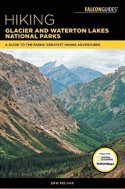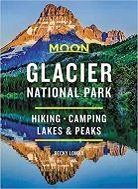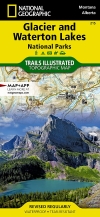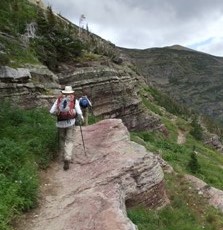| About Glacier National Park |
"Give a month at least to this precious reserve. The time will not be taken from the sum of your life. Instead of shortening, it will indefinitely lengthen it and make you truly immortal. Nevermore will time seem short or long, and cares will never again fall heavily on you, but gently and kindly as gifts from heaven."
- John Muir on his visit to Glacier in the early 1890s
Native Americans called it the "Backbone of the World." George Bird Grinnell referred to Glacier as the "Crown of the Continent.”
Encompassing more than a million acres in northwest Montana, Glacier National Park preserves some of the most beautiful alpine meadows, lakes, pristine forests, rugged peaks and glacially-carved valleys in the world. Glacier's diverse habitats are home to nearly 70 species of mammals, including grizzly bears, black bears, mountain goats, bighorn sheep, moose, wolverines, gray wolves and mountain lions. More than 275 species of birds visit or reside in the park as well, including such varied species as harlequin ducks, dippers, pelicans, sandhill cranes and golden eagles.
Glacier is also a hiker's paradise for adventurous types seeking wilderness and solitude. The park offers more than 740 miles of trails that lead to some of the most spectacular scenery on the planet. There are 175 named mountains in the park, with 10,448-foot Mt. Cleveland near Goat Haunt being the highest. Glacier has 762 lakes, more than 2800 miles of streams, and 25 named glaciers. Blackfoot Glacier, at roughly 0.7 square miles in size, is the largest.
In 2010 Glacier commemorated its 100th anniversary as a national park. In 1896 the Blackfeet Indian Tribe sold the land that would become the park to the U.S. government for $1.5 million. It was then set aside as a Forest Preserve in 1900. Glacier would finally become America’s 10th national park on May 11, 1910 when President William Howard Taft signed legislation into law.
 Thanks to influential leaders like George Bird Grinnell in the late 1800s, the area that would become Glacier National Park was preserved for future generations. Grinnell, an early explorer of the northwestern Montana region, was so inspired by the scenery that he spent the next two decades working to establish Glacier as a national park.
Thanks to influential leaders like George Bird Grinnell in the late 1800s, the area that would become Glacier National Park was preserved for future generations. Grinnell, an early explorer of the northwestern Montana region, was so inspired by the scenery that he spent the next two decades working to establish Glacier as a national park.
As a result of a meeting between Rotary Clubs promoting joint goodwill, Glacier and Waterton Lakes National Parks were designated in 1932 as the world's first International Peace Park. In 1974 the Waterton-Glacier International Peace Park was designated as an International Biosphere Reserve, and then was designated as a World Heritage Site in 1995.
Below are links to articles that will provide additional information to help plan your visit to Glacier.
| Hiking in Glacier |
Hiking in bear country
All Glacier National Park Trails
The Top 10 Hikes in Glacier National Park
The Best Easy Hikes in Glacier
Trail Status Reports and Updates
Before setting out on your hike stop by a park visitor center to obtain any warnings or recommendations for the trail you'll be hiking.
Hikers should always be prepared for a wide range of temperatures and weather conditions while hiking in Glacier National Park. Temperatures in the mountains typically fluctuate as weather patterns change, especially at the higher elevations. Glacier's western valleys generally receive the most rainfall. Strong winds and sunny days predominate on the east side of the park. During the summer months, daytime temperatures can exceed 90 degrees; however, overnight lows throughout the park can drop to near 20 degrees, and snow can fall anytime. You should also expect temperatures to be at least 10 to 15 degrees cooler in the higher elevations at any given time. You can click here for current weather conditions and forecasts.
| Glacier Travel Information |
Glacier Weather Forecasts and Climate
| Hiking Tips |
Expert Advice from REI on a variety of hiking related topics
Taking care of your hiking feet
Ramble On (a history of hiking - 2nd edition)
| Glacier National Park History |
What happened to the old Logan Pass Trail?
The Historic Circle Tours of Glacier National Park
The Cracker Lake Mine and the boom town of Altyn
What happened to the other 7 backcountry chalets in Glacier?
The Fire Lookouts of Glacier National Park
Why Were Locomotive Bells Placed Atop Mountain Passes in Glacier?
Archival film from the Great Northern Railway ~1930: Part 1 and Part 2




